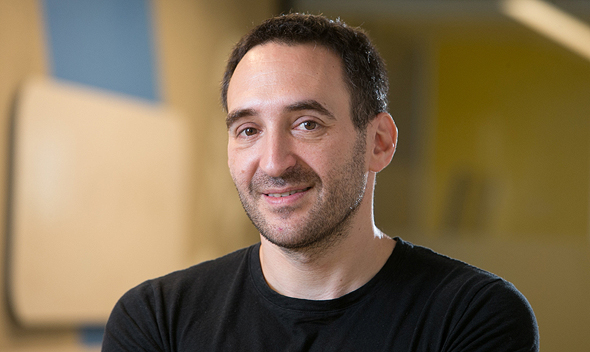Round B
Even when they’re dead wrong, the customer is always right
Shaul Olmert breaks down the importance of putting your product in front of real people as early in the development process as possible
The customer is usually completely ignorant about what it is you do, is unfamiliar with what it takes to provide the service or product he expects, doesn’t appreciate the hard work that takes place behind the scenes to fulfill his requests, and generally seeks to get more and pay less. The customer doesn’t realize how much value he can derive from your product and thinks he requires all sorts of features or options, which you— as someone familiar with his, as well as many other clients’ needs— know he doesn’t. It’s why you, and the rest of your team, work day and night to develop product features, according to customer specifications, even though you know that they are unnecessary and may even be harmful — that’s how it is with customers. They don’t stop making mistakes and yet are always right. There’s no doubt the mental wellbeing of your company’s employees would be far better if it weren’t for customers, but then again… that would be problematic on another level, so never mind. Bottom line, there’s no choice but to keep on doing what the customer asks.
 A waiter carrying food at a restaurant. Photo: Shutterstock
A waiter carrying food at a restaurant. Photo: Shutterstock Everyone is a customer at one point or another and is familiar with taking on the role of the grump who complains when things don’t go precisely as expected. Occasionally, after arguing for hours and unloading your frustrations on a call center representative who is trying to figure out what’s wrong with your internet speed and coordinate a technician’s visit, it’s worthwhile taking a deep breath and recalling that the person on the other end of the line has been working all day listening to complaints from angry customers, such as yourself, and that even though you’re suffering, their day has probably been even more annoying.
In the early stages of product development at our company Flying Pigs, the customer is still purely theoretical, call him Mr. X. We are constructing a model of him, figuring out his wants and preferences, researching his consumption patterns, and waiting excitedly for the day that our app will be out and he will start using it. During all these months of product development, we are conversing with him in our minds, explaining to him what the product should do and how he should use it, anticipating his feelings and reactions, where he might face obstacles and the sort of solutions we can offer him, aiming to serve him a product that we worked hard on and think will suit him perfectly. The problem is that it takes a long time, months, and often even years before Mr. X is substituted by a flesh and blood person. And sometimes when the product hits the market, the eventual user is far different than the one we pictured in our minds.
One of the guiding principles that must be kept in mind is that we tend to encounter the customer at a certain point in his day, and don’t always receive his full attention. A friend of mine once developed an app to manage invoices and receipts and was furious that many users commented that they had difficulty using it. “The first time you open the app, there is a video that explains exactly how it works!” he claimed, “what’s not to understand?” What he failed to realize was that most users didn’t have the patience to watch a video and that he needed to develop an interface that was more intuitive and find other product solutions to make using it easier. When he designed the product he came up with a narrative that included people watching the video before using the app for the first time, not realizing that people weren’t patient enough and didn’t follow his expectations of how they would behave. It’s a classic example of the customer being wrong since the instructions given to him were correct, but still ultimately being right.
Many companies make use of focus groups of potential customers as part of their development process, so as to get feedback for every step and reduce the discrepancies between their expectations and customers’ actual behavior. It is a good method to employ, but is only of limited use, since the sample is never fully representative of the target audience, and also because they try it out in an ideal setting, which does not reflect its normal use. One of the drawbacks of the method is that it often involves guided use that in the end serves to cement the developers’ preconceptions. The direct interaction between the developers and the users can cause the latter to try to please the designers with positive feedback, and the developers in turn, excessively guide the guinea pigs in a way that will increase their chances of using the product in an optimal fashion. All this results in a skewed understanding of where things stand.
The solution is to reduce as much as possible the time between beginning product development and testing it but with actual customers. This means getting your product out as early as possible, well before it includes all the features and uses you plan for it to have. It’s stressful because you’re blowing your chances of making a stellar first impression, with a product you know is not complete and does not represent the full potential of what you envision, but the sooner the feedback comes in, the better the chances are of developing a product that actually meets the customers’ needs.
We are currently starting to plan our first meetings with clients. If everything goes according to plan, in two months we will be able to present them with a first, initial, immature, and incomplete version of the product we’re envisioning. We are excited, but at the same time dreading the first encounter, crossing our fingers that we will experience that moment of magic that every product developer wants— when the customer truly ‘gets’ the product and appreciates just how wonderful it is. Experience shows, however, that that is not usually the case. Usually, what you get are questions, doubts, comments, and suggestions and you come out of the encounter feeling frustrated and angry that the customers continue to be right, no matter how wrong they are. After anger comes acceptance when you realize that there is no point in fighting with the client and the only thing you can do is change it to meet his desires. Just like the waiter at the steakhouse who doesn’t argue that you asked for your fillet medium-well and instead rushes to get you another one, since you are the customer and are right, (even if it’s clear that the steak was prepared perfectly) so too a product developer must adapt to the responses of the customers even if it’s clear by any objective standard that the original plan was far better.
Entrepreneurs must be visionaries and anticipate in advance what’s right for their customers. But at the same time, they have to be able to put their enthusiasm (and ego) aside and remind themselves that just like they would never allow someone else to tell them how they should eat their steak, they can’t dictate what their customers’ want. That flexibility along with the ability to adapt during the development process and ensure that you receive feedback as early and in as bias-free a way as possible is key to ensuring that that person who is always right actually chooses your product once it’s ready.
And, until we reach that fateful day, and receive the first feedback, we are trying hard to anticipate what Mr. X wants and are careful not to fall in love with any of our features, in case it turns out that he doesn’t need them. We are also conscious of the fact that in a short time we will for the first time hear the verdict of those who are always right and develop new and much more solid conceptions of our vision and what we need to do to adapt it to ensure that our company can make a product that is actually successful and not just an expression of our personal fantasies about what is good for other people. Wish us well!
 Shaul Olmert. Photo: Orel Cohen
Shaul Olmert. Photo: Orel Cohen Shaul Olmert is a serial entrepreneur and the co-founder and CEO of mobile app developer Piggy. He formerly founded interactive content company Playbuzz Ltd. You can find his previous columns here



